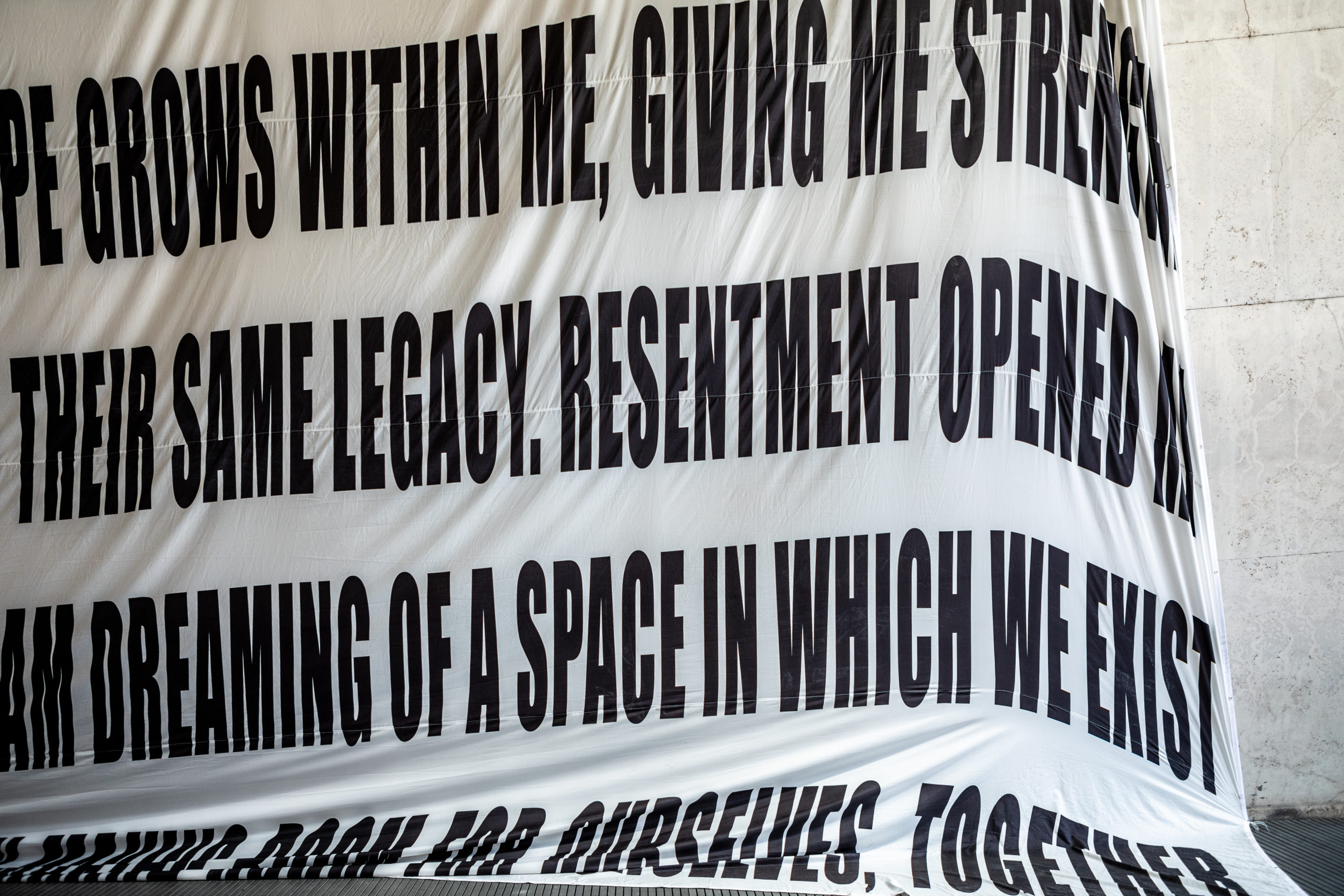Exhibition | Even if words appear in clearly divergent places they can be at one time
Even if words appear in clearly divergent places they can be at one time with visual artist Valentina De Zanche and the Pessima collective founded by Simona Coltello and Marte Gastaldello.
Opening | May 16th at 6.00 p.m,
Performance at 7.30 p.m
B11
The exhibition is open until July 31st on Wednesday, Friday and Sunday from 3.00 pm to 8.00 pm, Thursday from 3.00 pm to 10.00 pm and Saturday from 11.00 am to 10.00 pm.
On Thursdays, guided tours with cultural mediators will be available
The current setup of the exhibition includes the works Tiny Tears and Microphones by Valentina de Zanche, while the site-specific work No room for effortless conversations by PESSIMA is no longer on display,
as it is currently exhibited at BASE Milano.
On Thursday, May 16, Manifattura Tabacchi will unveil new projects dedicated to culture and contemporary art.
Building B11 will host the exhibition-event Even if words appear in clearly divergent places they can be at one time, featuring Valentina De Zanche and Pessima, curated by SPECIFIC.
The exhibition will begin with the performance Lylac by Valentina De Zanche and Aitch, scheduled for 7.30 pm in the exhibition space. The entire project is part of the first cycle of artist residencies, Straordinari, promoted by BIM Milano, designed with an interdisciplinary approach that reflects the diversity of its participants.
The site-specific work No Room for Effortless Conversations is by Simona Coltello and Marte Gastaldello.
The intervention starts from a reflection on the meaning of the flag as an object capable of conveying both a personal and collective identity. In grappling with
this mechanism, Simona and Marte have created their own language starting from the one used in the posters found at the entrance of collective spaces, clubs,
and other community centers they belong to. It’s a well-defined code used to communicate to those passing through that they are entering a safe space where
their identity will not be doubted or questioned. This language is taken and brought outside of its context, abstracted until it becomes a form of graphic flag that, in visual contrast with what inspired it, has no personal or emotional sign except that expressed by the words themselves.
The discourse here simply occupies space, it does not seek to impose itself or demand explanation; it doesn’t necessarily need to be understood, but by speaking directly to the observer, it can easily be grasped with a small effort.
In leaving a trace of their passage, Marte and Simona aim to give the building a glimpse into their microcosm: the mark of a collective body that feels secure
in its existence.



